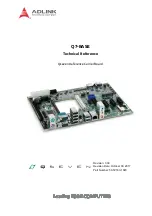
1.2 MANUAL HANDLING TECHNIQUES
11
The
SMART
lifting technique
This technique can be used to pick up small light loads from low levels.
S
ize up the Load
• Assess the load (size, shape and weight).
• Assess whether the load needs to be moved;
• Where is it going to be placed” Check that there are no obstructions;
• Assess whether mechanical or human assistance is required.
M
ove the Load as close to the body as possible
• A load is heavier to lift or carry if it is not close to the body.
• The whole hand should be used to ensure a firm grip.
A
lways bend your knees
• Maintain balance.
• Keep feet apart and in a comfortable position.
• Minimise lower back bending.
• Bend knees preferable at as large an angle as possible but not at a right angle -
use a semi squat in preference to a full squat.
R
aise the load with your legs
• Achieve the lift smoothly and without jerkiness.
• Maintain the normal curvature of the spine to allow the force of the load to be
distributed evenly from the spine to the pelvis.
T
urn your feet in the direction that you want to move the load.
• Avoid unnecessary bending, twisting and reaching.
• Change direction by turning your feet and not your back.
• To set the load down, squat down, keep your head up and let
• Let your legs do the work.
Remember to ‘THINK TALL’ chest lifted, shoulders relaxed, chin tucked in and
head level.






























